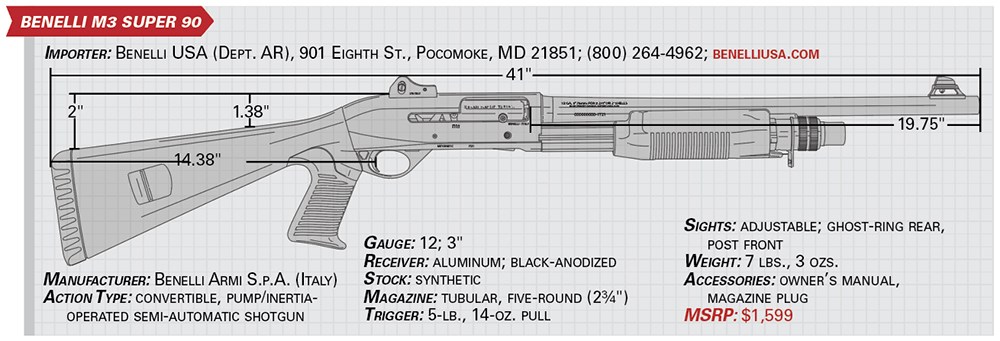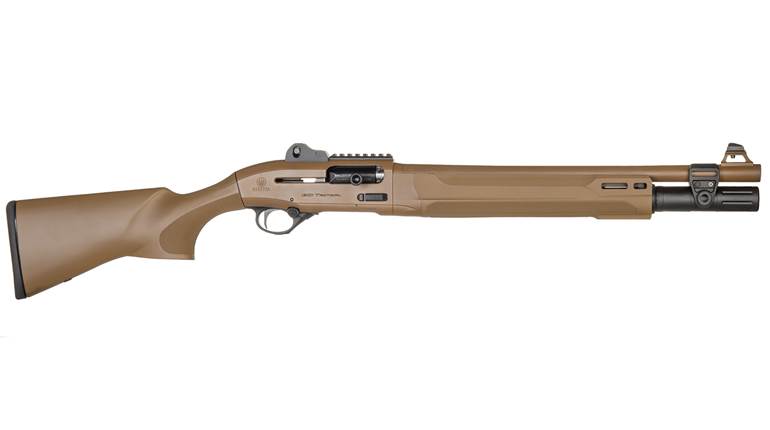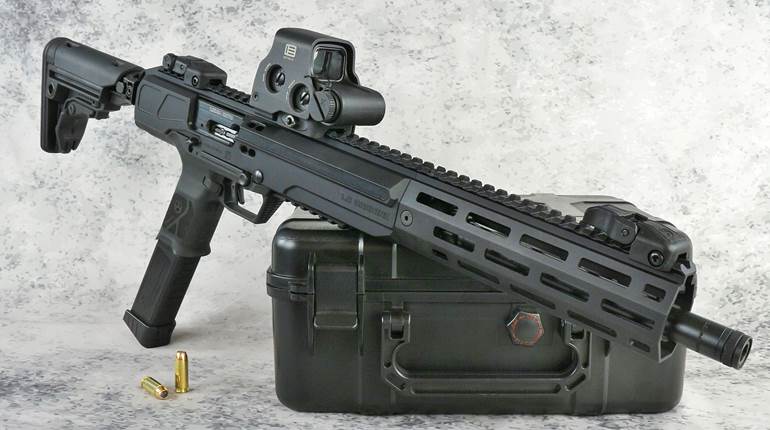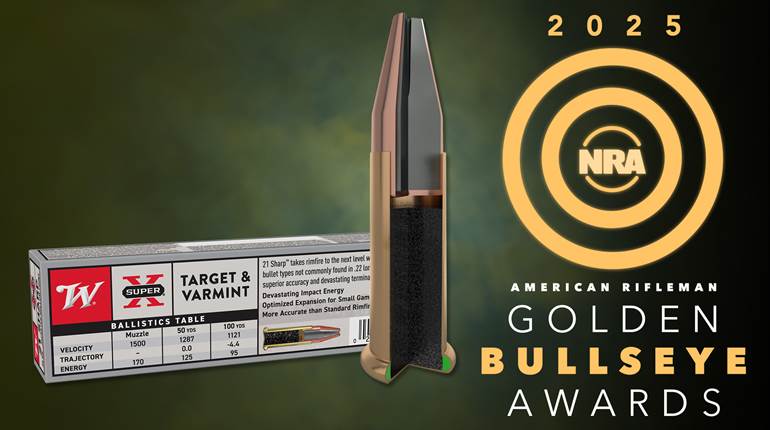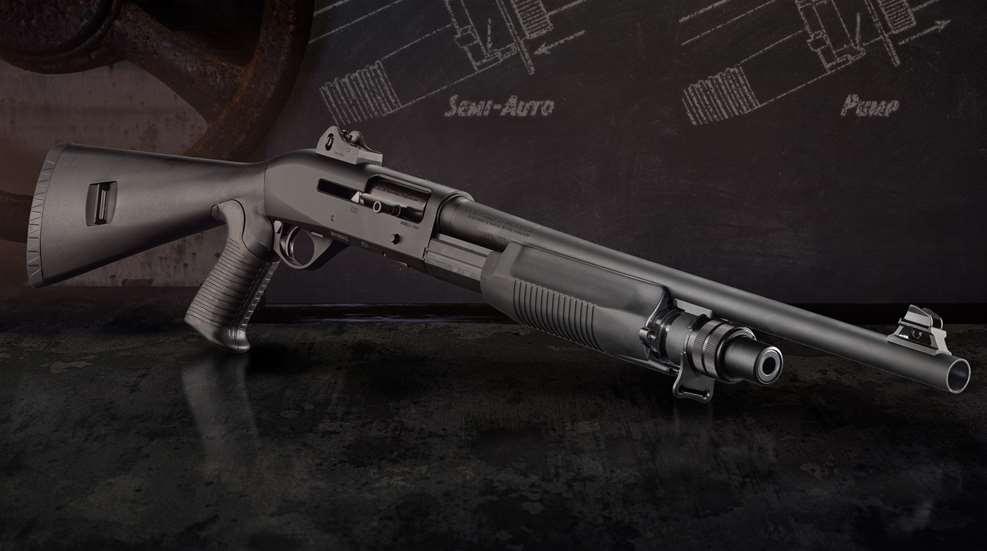
Around the same time Mazda released its MX-5 Miata roadster, in 1989, Benelli’s M3 convertible shotgun began reaching American shores. The Mazda was arguably the first convertible car that was both fun to drive and reliable, and its top could be easily raised and lowered, depending on the weather and the task at hand. Likewise, the M3’s versatile operating system meant that servicemen and home defenders no longer had to choose between reliability and speed—changing between pump and semi-automatic operation required only a flick of the wrist.
Today, the Miata is the best-selling convertible car of all time. Meanwhile, Benelli’s M3 Super 90 continues its slide into near obscurity. Let’s discuss this revolutionary design, address the dilemma it solves and ponder why it may not be as popular as it should be.
In the past, if people needed a defensive shotgun, they first had to decide between a pump-action for its unflappable reliability in any condition—perhaps around 99.9 percent—or a semi-automatic for its inherent shooter-friendliness. Although high-end autoloaders today are quite reliable when kept clean, they can balk with specialized rounds such as low-recoil loads or less-than-lethal options. Add a pinch of sand, a helping of neglect and some inclement conditions, and you may wind up with a single-shot.
Because of this, most people who trust their lives to a shotgun go with a pump, while hunters and competitors most often choose the faster, lighter-recoiling self-loader, although there are semi-automatic fans like myself who point out that many of the same folks who swear by pump shotguns also depend on semi-automatic handguns and carbines. Tell me that makes any sense. Regardless, the debate rages on ... but it doesn’t have to. Folks seem to forget that one company solved this problem more than 30 years ago.
The Italian firm of Benelli Armi S.p.A. produced motorcycles before it began making shotguns in 1967. Bruno Civolani invented the company’s trademarked inertial-spring method of semi-automatic shotgun function, although the company’s specific patent, No. 4604942, was granted to Paolo Benelli in 1986, three years after Beretta purchased the Benelli gun company.
The inertial-action concept was an advancement of the Swedish Sjögren shotgun first made in 1908 that failed to garner popular appeal; it was later used effectively by Franchi (now also owned by Beretta), but it was the marketing efforts of Benelli beginning in the ’90s that really made hunters, servicemen and competitive shooters aware of the action’s effectiveness. Then shooters personally witnessed its inherent advantages. Here’s how it works:

A floating bolt within the shotgun’s aluminum receiver features a rotating bolt head that locks onto the gun’s steel barrel extension to seal the chamber. When fired, recoil sends the gun (barrel, receiver and stock as one unit) backward, while the heavy bolt tries to remain at rest—hence the term “inertia.” After a split second of rearward-moving force around it, however, a stout spring within the bolt body compresses to a maximum of 4 mm.
When it rebounds, it pushes the bolt head forward (even as the gun is traveling backward), rotating it via a stud-and-channel system to unlock its bite on the barrel extension and subsequently succumbing to the rearward momentum of recoil. As the gun’s momentum slows against the mass of the shooter’s shoulder, the bolt flings backward, extracting the fired shell from the chamber and ejecting it via a spring-loaded, L-shaped ejector on the inside wall of the receiver that slides to accommodate various shell lengths.

All the while, the bolt’s travel continues to compress a recoil spring, which on most Benellis is hidden within the buttstock. Once this spring bottoms out, it returns the bolt forward to the chamber, but not before it picks up another shell from the carrier and shoves it into battery. The whole process happens in about 1/5 of a second.
The system’s genius is that it requires no gas ports to foul and no moving barrels like the long-recoil actions before it—and it has fewer moving parts to wear and break. Gas and grime from the shell are blown out of the barrel rather than cycled back through the gas ports and into the action as in gas guns. As a result, the inertial system is incredibly reliable and self-regulating.
It’ll shoot any length of shell in any order without adjustment, so long as the gun’s build and the ejection port is strong enough and long enough to accommodate it. It’s also faster-cycling than most gas actions, a trait that allowed exhibition shooter Tom Knapp to hit 10 flying clays with an M2 Super 90 in 2.2 seconds. The action is also inherently light, thanks to its simplicity (Benelli’s 20-ga. Montefeltro weighs just 5 lbs., 8 ozs.).
Fairly certain it could steal a hearty share of the semi-automatic market with its fast and reliable inertial action, Benelli realized it could convert the gun to a pump-action fairly easily, because, unlike gas-powered actions, very few of the inertia-driven action’s parts are wildly different from a pump. Basically, all its engineers had to do was devise a way to link the bolt to the gun’s unlocked fore-end on demand, then provide a way to quickly unlink them so the bolt could move independently as a semi-automatic.
So, in 1987, Benelli released its original M3, a pump/semi-automatic convertible shotgun. In my opinion, it should have been the end-all. But the market—often pushed and pulled by trends and whims—is a fickle beast.
In the early 2000s, Benelli updated the original M3 by building it on a smaller frame, making it lighter. It also altered the gun’s appearance slightly by giving its furniture a more rounded, updated look. Essentially, the M3 Super 90 is a top-end semi-automatic with every bell and whistle—and also an emergency switch. In normal times, when shooting standard or heavy loads, the M3’s inertial, autoloading action functions flawlessly.
But, when reduced-recoil loads or less-than-lethal options need to be manually chambered and extracted, the user can simply twist a collar mounted under the fore-end cap. This minimal movement unlocks the fore-end and engages the action rods of the pump system, instantly converting the M3 into a pump-action.
Returning the control disengages the action bars, locks the fore-end in place and allows the inertia recoil system to function as a semi-automatic. Unlike most Benelli inertial guns, the M3’s recoil return spring is located ahead of the receiver around the magazine tube, so a spring tube in the buttstock isn’t needed. This allows the stock to be swapped for a folding or collapsing style if the user so chooses.

The M3’s design is pure, simple engineering genius; it gives the user all the advantages of a semi-auto with the reliability of a pump—with a small movement that, with practice, takes less than a second without sacrificing shooting position. And, as I learned by shooting it, the hybrid action grants several surprises: First, in pump mode, the need for an action-release button typical of pumps is eliminated, thanks to the rotating bolt head that locks into the extension with the action pushed fully forward. To open the action, simply pump it back.
Secondly, after the last round from the magazine is ejected, the action locks open even when in pump mode. This prevents the shooter from inadvertently pumping the gun when the magazine is dry, creating an unknown, chamber-empty situation. I’d think this feature would be desirable in the heat of battle. Curiously, however, while the action appears to feature Benelli’s trademark magazine-dump/bolt-lock button that allows the chamber to be cleared without releasing a shell from the magazine unless this button is first depressed, the M3’s action releases a shell from the magazine each time the bolt is opened, thereby preventing the shooter from easily swapping loads in the chamber only like most other Benellis. I also found that I could not “float a shell” on the carrier to gain another round in total capacity like some older models.
Action aside, the M3 Super 90 comes with every feature wished for in a modern combat shotgun with the exception of its rather minimal five-round magazine and its lack of a light rail. The lack of a factory extended magazine tube is due to American importation laws, but extensions can be purchased from Benelli, or less expensively from third-party manufacturers such as Carlson’s Choke Tubes, as can flashlight mounts.
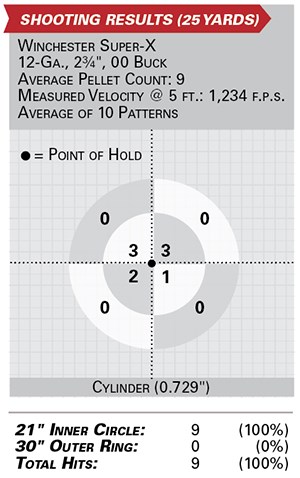 Like its action, the M3’s stock offers the best of both worlds. The M3 is available in a Combat version that comes with a rubber-coated pistol grip for one-handed, non-slip control. While I’m normally not keen on pistol grips because I believe they promote rifle-style shotgun shooting, this one features a full-size/full-contour buttstock that greatly enhances intuitive pointing, proper head alignment, etc., while mitigating recoil and helping to control the gun as a true shotgun stock should.
Like its action, the M3’s stock offers the best of both worlds. The M3 is available in a Combat version that comes with a rubber-coated pistol grip for one-handed, non-slip control. While I’m normally not keen on pistol grips because I believe they promote rifle-style shotgun shooting, this one features a full-size/full-contour buttstock that greatly enhances intuitive pointing, proper head alignment, etc., while mitigating recoil and helping to control the gun as a true shotgun stock should.
The gun sports a 19.75" cylinder-bore barrel (no choke tubes) that is available with fiber-optic sights or a front post that works in combination with the ghost-ring rear aperture. Although I’m more of a simple bead guy, the M3 is designed for tactical roles where less-than-lethal and/or slug loads are anticipated, so the ghost ring is beneficial for these applications.
After cycling and firing nearly 500 rounds through my test M3, I’ve only experienced a few jams—most of which occurred while using very light 1-oz. target loads. When I experienced a malfunction, I simply switched to pump mode with my support-hand thumb, cleared it with a firm pump and—viola!—fired the rest of the loads in pump mode without a hiccup. In semi-automatic mode, I appreciated the recoil reduction that was apparent over pump mode, thanks to the mitigating action of the internal springs.
I love the rubber overmolding on the grip that resists slipping in the hands, even in the sweaty summer heat. The gun weighs 7 lbs., 3 ozs., which is a perfect balance between easy-to-carry and pleasant-to-shoot. Its short barrel and overall compact length of 41" make it easy to run and shoot among cover.
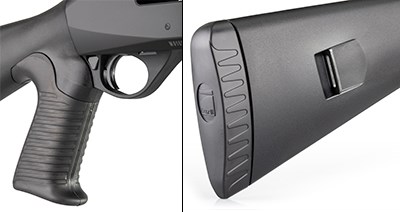 In other words, this is a shotgun that can be used for any shotgun application, from hunting deer to defending the home or the homeland. And for what is the best defensive shotgun ever devised—in my opinion—it’s also reasonably affordable, with real-world prices under $1,500. So why isn’t it more popular?
In other words, this is a shotgun that can be used for any shotgun application, from hunting deer to defending the home or the homeland. And for what is the best defensive shotgun ever devised—in my opinion—it’s also reasonably affordable, with real-world prices under $1,500. So why isn’t it more popular?
It didn’t help when the U.S. Marine Corps made Benelli’s M4 model its official shotgun. Why the Corps chose the M4 over the M3, or even the inertia-action M2, baffles me. While the M4 has slightly more recoil mitigation thanks to its heavier weight and inherently lighter-recoiling gas (piston) action, that’s about it. In my opinion, the M3 beats it in every other way, including speed and reliability. It’s also less expensive and can shoot less-than-lethal loads with the flick of a switch. But hey, when did the federal government ever care about cutting costs, right?
What I do know is that it’s common for civilians to covet guns that are used by the military, and so I suspect the M3 would be much more popular today had the Marine Corps chosen it instead of the M4. I also believe that some shotgunners are skeptical of one gun that’s reported to do it all; perhaps they think it’s a mediocre pump and a mediocre semi-automatic or that it’s too gimmicky. Maybe they think, “if it’s sporty, then its ragtop surely leaks.”
But none of that is true—it’s actually a great shotgun in every sense. So, if you can’t decide between a pump and an autoloader, you don’t have to, and indeed you shouldn’t. You can have both.
It’s like that Miata that your wife wants so the wind can rush through her hair when the weather is peachy, and the one you secretly wouldn’t mind owning yourself because it’s actually a good car that handles like a true roadster. But now that I think about it, maybe the Miata was a bad comparison. BMW’s M3, much like Benelli’s M3, has become well-regarded among convertibles. Coincidence, you ask? I don’t know. I’m just a gun writer—I can’t afford sports cars.